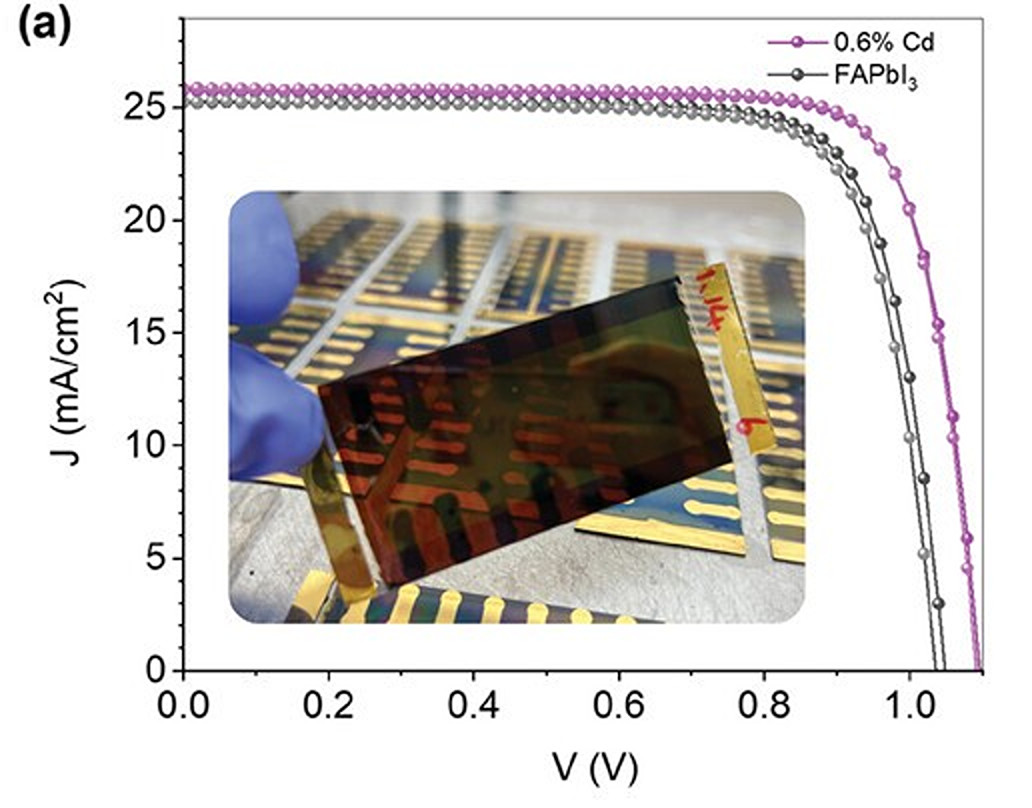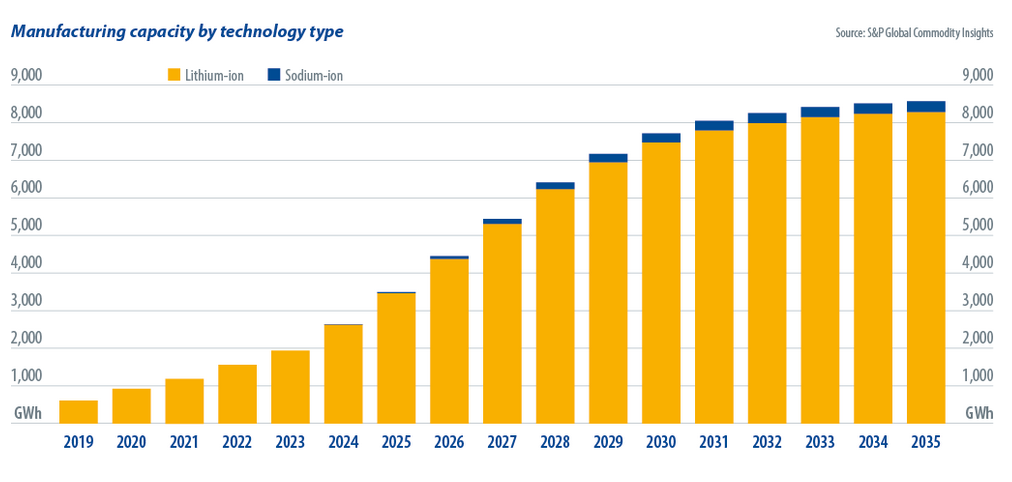An international research team has fabricated for the first time a perovskite solar cell based on a cadmium-doped formamidinium lead iodide (FAPbI3) absorber.
FAPbI3 is one of the most promising perovskite materials for solar cell applications, as it offers a narrow energy bandgap and remarkable stability. “Given the advantages of FAPbI3 perovskite solar cells, it is now important to upscale them − a challenge yet to be addressed considering the FAPbI3 polymorphism issue and its hypersensitivity to fabrication conditions,” highlighted the researchers. “We thus hypothesized that introducing a homovalent Pb-site additive would overcome the issue. One such alternative is cadmium.”
The use of cadmium in the form of cadmium iodide (CdI2) is intended to stabilize the blade coating process at room temperature, which otherwise may cause the above-mentioned polymorphism issue, which depends on ambient conditions and the humidity of ambient air.
To investigate the potential effects of CdI2 doping, the research group first used the compositionally graded film (CGF) optimization method, which provides a continuous combinatorial combination of all potential binary alloys. They created a FAPbI3 film with the CdI2 deposited in different concentrations through the film, from 0% to 5%. Then, using a compact spectrometer with a reflection probe, the photoluminescence (PL) spectra were measured.
“The PL intensity increased along the film, reaching the maximum intensity at l = 3.6 cm, corresponding to around 0.6% concentration of Cd2+, and then decreasing gradually,” the academics explained. “The enhancement of PL indicates the reduction of non-radiative recombination rate in the perovskite film, which is beneficial for the performance of solar cells.”
The scientists then blade-coated FAPbI3 films with different levels of CdI2 on indium tin oxide (ITO)/glass substrates. Using scanning electron microscopy (SEM) images, they found that at 0.6% cadmium, the size and density of grains reached full coverage, an important attribute for films in solar cells.

Image: University of Victoria, Advanced Energy Materials, CC BY 4.0 DEED
“We also assessed the stability of the films,” the group highlighted. “After aging in ambient air for 30 days at a relative humidity (RH) of 35%, the FAPbI3 film with no Cd predominantly exhibited the 𝛿-phase, while the optimal Cd-doped samples showed no sign of degradation. Thus, we conclude that Cd doping effectively released the structural strain of the FAPbI3 perovskite and stabilized its desired 𝛼-polymorph.”
The team designed the cell with a substrate made of glass and ITO, a tin oxide (SnO2) electron transport layer (ETL), the cadmium-doped FAPbI3 absorber, a hole transport layer based on Spiro-OMeTAD, and a gold (Au) metal contact.
Tested under standard illumination conditions, the device achieved an efficiency of 22.7%, an open-circuit voltage of 1.10 V, a short-circuit current density of 25.9 mA/cm2, and a fill factor of 79.6%. A reference cell without cadmium doping achieved an efficiency of 20.8%, an open-circuit voltage of 1.05 V, a short-circuit current density of 25.2 mA/cm2, and a fill factor of 78.5%.
“Control FAPbI3 showed poor reproducibility due to the presence of pinholes, while over 80% of target Cd-FAPbI3 showed an efficiency of over 20%. Solar cells of 0.9 cm2 active area with and without Cd showed a champion efficiency of 16.41% and 13.90%, respectively,” the scientists stated.
Using Transient Absorption Microscopy (TAM), the academics also found that the target sample exhibits reduced trapping of charges and longer lifetimes. “The trap states in the target sample are more readily filled, leading to increased charge accumulation and higher VOC.”
The novel manufacturing process was presented in the study “Cadmium-Doping Slows Trap Emptying in Ambient-Air Blade-Coated Formamidinium Lead Iodide Perovskite Solar Cells,” published in Advanced Energy Materials. The research group included scientists from Canada’s University of Victoria, The University of British Columbia, and China’s Henan University.
This content is protected by copyright and may not be reused. If you want to cooperate with us and would like to reuse some of our content, please contact: editors@pv-magazine.com.



By submitting this form you agree to pv magazine using your data for the purposes of publishing your comment.
Your personal data will only be disclosed or otherwise transmitted to third parties for the purposes of spam filtering or if this is necessary for technical maintenance of the website. Any other transfer to third parties will not take place unless this is justified on the basis of applicable data protection regulations or if pv magazine is legally obliged to do so.
You may revoke this consent at any time with effect for the future, in which case your personal data will be deleted immediately. Otherwise, your data will be deleted if pv magazine has processed your request or the purpose of data storage is fulfilled.
Further information on data privacy can be found in our Data Protection Policy.